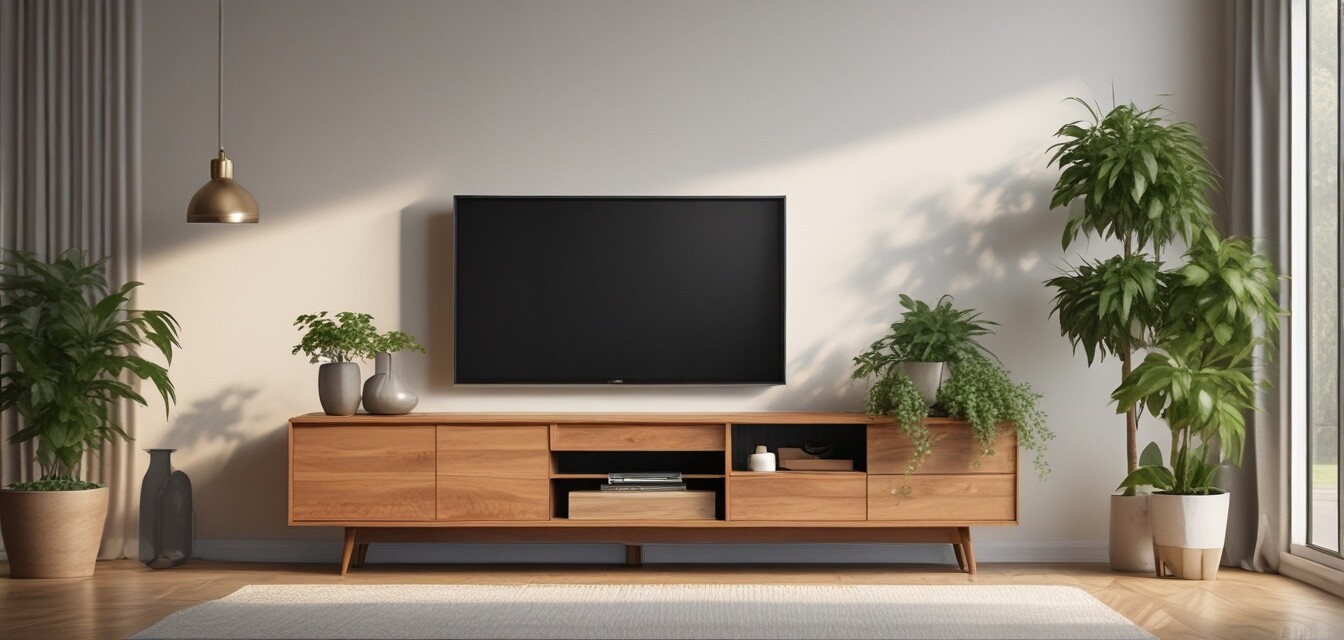
Building a Zero-Waste Home with Eco-Friendly Furniture
Key Takeaways
- Choosing eco-friendly furniture helps reduce waste and promotes sustainability.
- Consider materials like recycled wood, bamboo, and metal for TV stands.
- Repair and upcycle old furniture to contribute to a zero-waste lifestyle.
- Mindful purchasing habits are essential for a sustainable home environment.
- Explore various eco-friendly options available for TV and media storage.
Introduction
In our fast-paced modern world, it's more important than ever to consider how our lifestyle choices impact the environment. One way to live sustainably is by creating a zero-waste home, where every item serves a purpose. This article explores tips for incorporating eco-friendly furniture, specifically TV stands, into your living space. Let’s dive into the world of sustainable living and discover how you can build a zero-waste home with eco-friendly furniture.
Understanding Zero-Waste Living
Zero-waste living is a philosophy aimed at minimizing waste and optimizing resources. It encourages people to rethink their consumption habits, focusing on reducing, reusing, and recycling whenever possible. Furniture is a significant part of this equation.
What is eco-friendly furniture?
Eco-friendly furniture is made from sustainably sourced materials and designed to minimize its environmental impact throughout its life cycle. Here are some key attributes:
- Made from renewable or recycled materials
- Produced with non-toxic finishes and adhesives
- Built to last, reducing the need for frequent replacements
- Easily recyclable or biodegradable at the end of its life
Choosing the Right TV Stand
The TV stand is often the centerpiece of the living room. When selecting one, it’s crucial to evaluate its environmental impact. Here’s a comparison of popular materials:
| Material | Benefits | Considerations |
|---|---|---|
| Recycled Wood | Reduces deforestation, unique designs | Can be more expensive, variable quality |
| Bamboo | Rapidly renewable, lightweight | Check for sustainable sourcing, can warp |
| Metal | Durable, often made from recycled materials | May have chemical coatings, heavy |
| Glass | Recyclable, sleek aesthetic | Breakable, energy-intensive to produce |
Repair and Upcycle
Before discarding old furniture, consider repairing or upcycling it. This not only saves money but also reduces waste. Here are some ideas:
- Refinish an old wooden TV stand with eco-friendly varnish.
- Repaint furniture using low-VOC paint for a fresh look.
- Convert an unused bookshelf into a TV stand with some modifications.
Mindful Purchasing Habits
When investing in new furniture, adopt mindful purchasing habits:
- Prioritize quality over quantity: Choose durable items that last.
- Research brands: Support companies with sustainable practices.
- Consider second-hand options: Thrift shops and online marketplaces offer unique finds.
- Evaluate the lifecycle of the product: Will it remain useful, or will it become waste?
Exploring Eco-Friendly Options
Many online stores specialize in eco-friendly furniture. Here are some great options for TV and media storage:
- Corner TV Stands – Ideal for space-saving designs.
- Entertainment Consoles – Multi-functional and stylish.
- Floating TV Stands – Modern, minimalist solutions.
- Metal & Glass TV Stands – Durable and sleek.
- Modular TV Stands – Customizable options that fit your needs.
- Wooden TV Stands – Timeless designs that promote sustainability.
Conclusion
Building a zero-waste home starts with the choices we make about the furniture we bring into our lives. By opting for eco-friendly TV stands and other furnishings, you not only create a stylish living space but also contribute to a healthier planet. Remember, every small decision counts towards a sustainable future. Start your journey today!
Tips for beginners:
- Start small—replace one item at a time.
- Always check the labels and certifications of eco-friendly furniture.
- Engage with local communities for repair workshops.
- Educate yourself on sustainable practices.